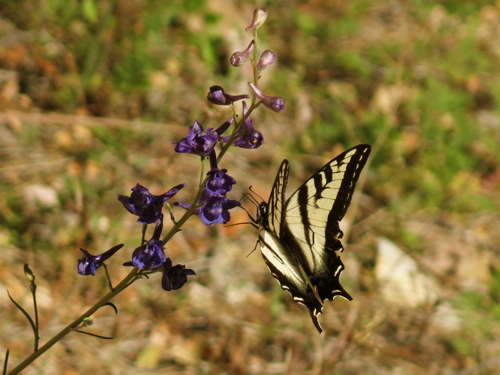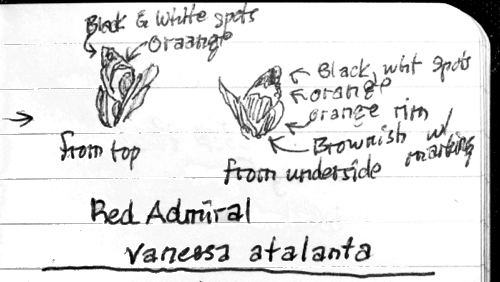I took a break from curriculum development on Tuesday and drove down to Pinnacles National Park. Of course I looked at the incredible rock formations for which the park is famous. But as spectacular as the scenery was, the highlight of the trip was watching butterflies in Bear Gulch. In particular, I spent about ten minutes watching one Western Tiger Swallowtail visiting larkspur blossoms. I took a great many photographs of this one butterfly, getting as close as I could. With a photograph, you can capture narrow slices of time: the position the butterfly’s wings take as it balances on a flower; the way it clings to the flower with its legs and arches its head towards a blossom; the moment when the butterfly is just approaching the flower:

But sometimes what sticks in your memory is not what you actually saw, but the photographs of what you saw. After I left Pinnacles, I drove to Elkhorn Slough National Estuarine Research Reserve. When I saw butterflies there, I made a point of trying to sketch them in my field notebook rather than just photograph them, like this common butterfly:

This sketch, as an end product, is not nearly as attractive as a photograph (and I did take a photograph of this insect as well) — it’s not as attractive, but I learned more about butterflies by making this sketch. By comparing my sketch to a field guide, by seeing what I left out, I learned what I don’t see when I look at butterflies. I suspect making less attractive sketches like this does more towards sharpening my powers of observation than does taking a great many very attractive photographs.
